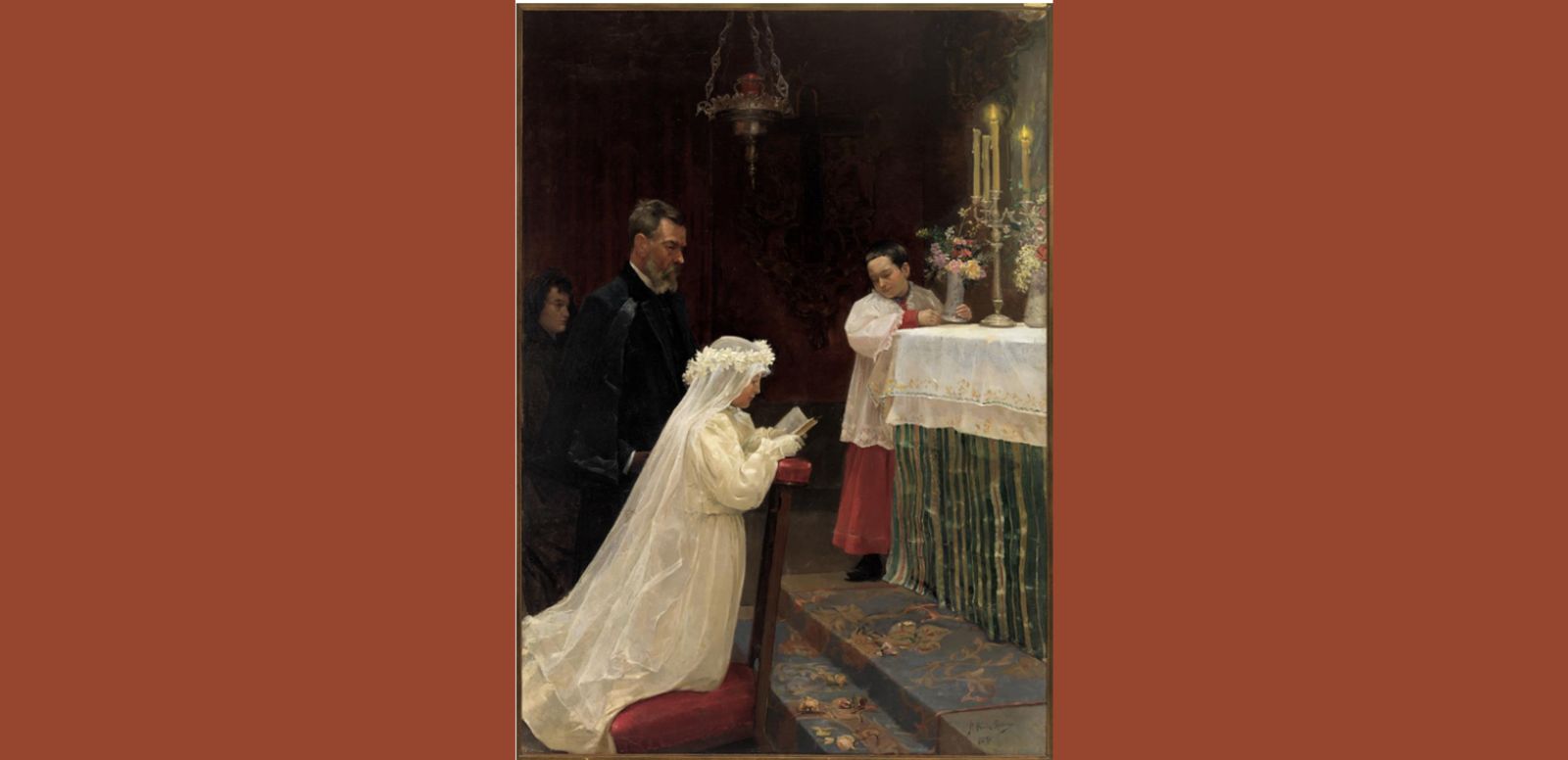
Donación Pablo Picasso, 1970
Museu Picasso Barcelona
© Sucesión Picasso, VEGAP, Madrid, 2024
The work First Communion (1896) represents a milestone in Pablo Picasso's early career and marks his foray into large format painting. The piece was created in the workshop of the painter José Garnelo Alda, where Picasso, on his father's instructions, went to complete his training.
This canvas was created for the purpose of being exhibited at the Exposition of Fine Arts and Artistic Industries of Barcelona in 1896, at the request of Picasso's father, José Ruiz. For his part, Garnelo, who specialized in religious themes, provided Picasso with the necessary knowledge for the composition.
The main scene presents Picasso's sister, Lola, kneeling on a kneeler with a missal, along with two additional figures: the godfather, identified as Dr. Vilches, a friend of Picasso's father, and the godmother, possibly the doctor's wife. The altar boy, son of the Vilches, balances the composition.
Picasso demonstrates an astonishing technical mastery despite his youth. The lighting, coming from a point outside the scene, highlights Picasso's technical skill, especially in the translucent representation of the girl's veil and other elements. The chromaticism reflects the religious aesthetic of the time, with reddish tones on the walls and pure white in the girl's dress. Picasso achieves depth through the arrangement of the figures on different planes.
The technical execution in First Communion (1896) reveals a young Picasso's skill and understanding of the social and religious context of the time. Additional studies at the Museu Picasso Barcelona, such as the sketches of Lola and Altar Boy, provide further insight into the artist's creative process at this early stage of his career.
Sources:
Museu Picasso Barcelona:

